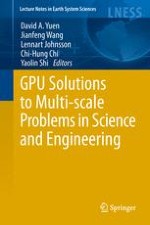2013 | OriginalPaper | Chapter
4. GRAPE and GRAPE-DR
Author : Junichiro Makino
Published in: GPU Solutions to Multi-scale Problems in Science and Engineering
Publisher: Springer Berlin Heidelberg
Activate our intelligent search to find suitable subject content or patents.
Select sections of text to find matching patents with Artificial Intelligence. powered by
Select sections of text to find additional relevant content using AI-assisted search. powered by
